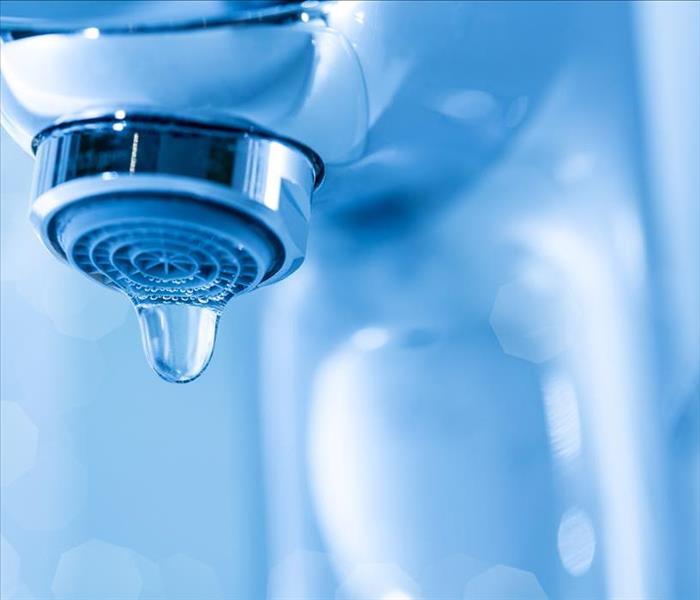How To Repair a Leaking Faucet
9/24/2021 (Permalink)
A leaking faucet is a much larger problem than the annoying drip you hear at night; the consistent loss of water can hit you in the wallet every month. The good news is that fixing that dripping faucet is a pretty straightforward task that you can complete before it's necessary to contact a Greenville, NC, water damage cleanup and repair company.
Four Common Leaking Faucet Repairs
No matter which type of faucets you have in your home, turn the water off before you begin this repair. Check under your sink for a turn-off lever or knob. Turn the knob clockwise and then check the faucet to be sure the water is off. It's also a good idea to close the sink plug, so you don't lose any small hardware in the drain.
1. Ball Faucet: Single Handle That Moves On an Internal Ball
This type of faucet is most common in kitchens and is a bit complicated because it has a lot of parts to remove and replace. Rather than buying the parts separately, check your hardware store for a faucet kit. Begin by removing the handle; it should unscrew fairly easily. Use a pair of pliers to remove the cap, collar, faucet cam, washer, and ball. You'll need a slender tool, such as a pair of needle-nose pliers, to remove the inlet seals and springs from inside the faucet. Before replacing the O-rings, coat them with a plumber's grease. Replace the springs, valve seats, and cam washers with parts from the kit as you reassemble the faucet.
2. Cartridge Faucet: One or Two Handles Next to the Faucet
Look for a screw on the handle or handles and remove it; then remove the handle(s). Use pliers to remove the threaded retaining clip, if it's present. Pull the cartridge up and out of the faucet. Remove the exposed spout and then look for the O-rings. Remember to coat the new rings with the plumber's grease before installing the replacements.
3. Compression Faucet: Two Handles on Either Side of the Faucet
This is the oldest type of faucet. Start by removing the handles on either side of the faucet. Plastic caps may cover screws that need to be loosened. Next, remove the nut, O-ring, and seat washer. Most of the time, this rubber washer is the source of the leak. Regular wear and tear can affect the washer until it is too damaged to be effective. Before installing the new washer, coat it with plumber's grease
If water is seeping from the handles, rather than a leaking faucet, the O-ring is probably the problem. When this is the case, you'll need to take the O-ring to the store, so you can pick the right replacement.
4. Disk Faucet: Single Lever over a Cylindrical Body
This modern faucet doesn't require repairs very often. Begin by unscrewing the handle to expose the escutcheon cap. Remove this, unscrew the disk cylinder, and remove the exposed seals. Clean the cylinders to remove all hard water buildup. Replace the seals with exact replacements and reattach the rest of the handle.
As soon as you notice a leaking faucet in your home, take steps to repair it. A successfully fixed leak can save you a lot of money in wasted water and potential water damage.




 24/7 Emergency Service
24/7 Emergency Service
